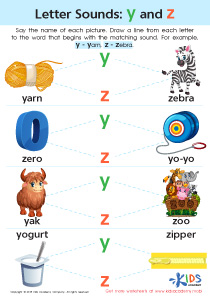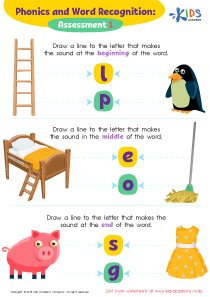Normal Middle Sounds Worksheets for Ages 3-8
3 filtered results
-
From - To
Discover engaging "Normal Middle Sounds Worksheets for Ages 3-8" designed to help young learners master phonemic awareness. These colorful and interactive worksheets from Kids Academy are perfect for developing crucial reading skills, focusing on identifying and pronouncing middle sounds in words. Ideal for preschoolers and early elementary students, each worksheet encourages children to listen, repeat, and connect sounds through fun activities. Perfect for classroom use or at home, our worksheets pave the way for confident readers by building a strong foundation in phonics. Boost your child’s literacy journey today with these expertly crafted middle sound exercises!
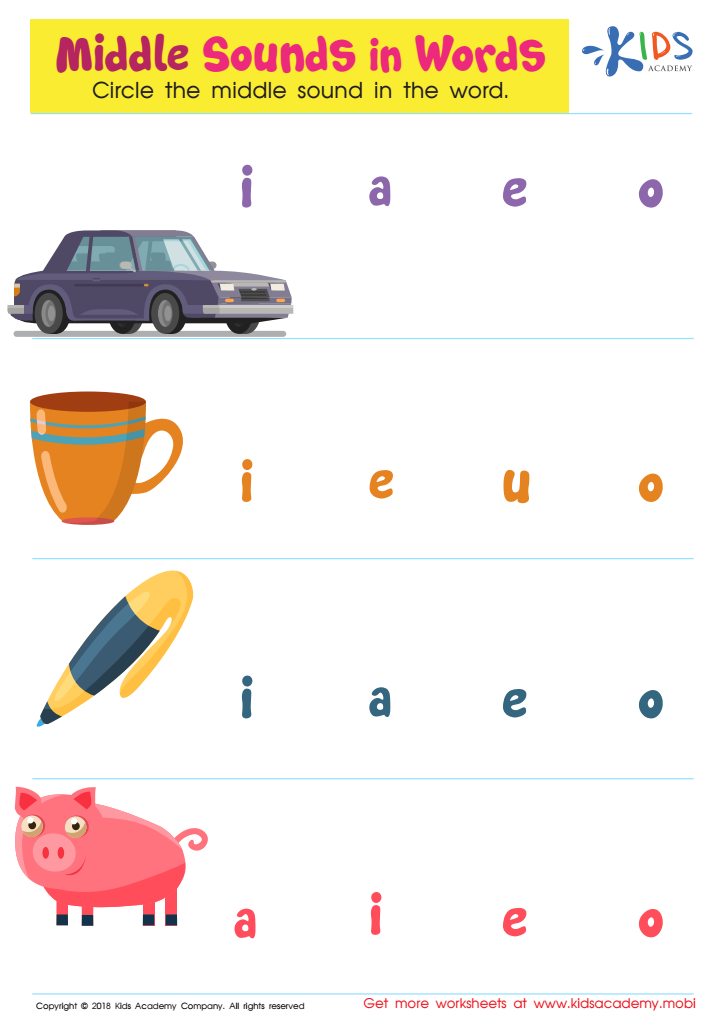

Middle Sounds in Words Worksheet
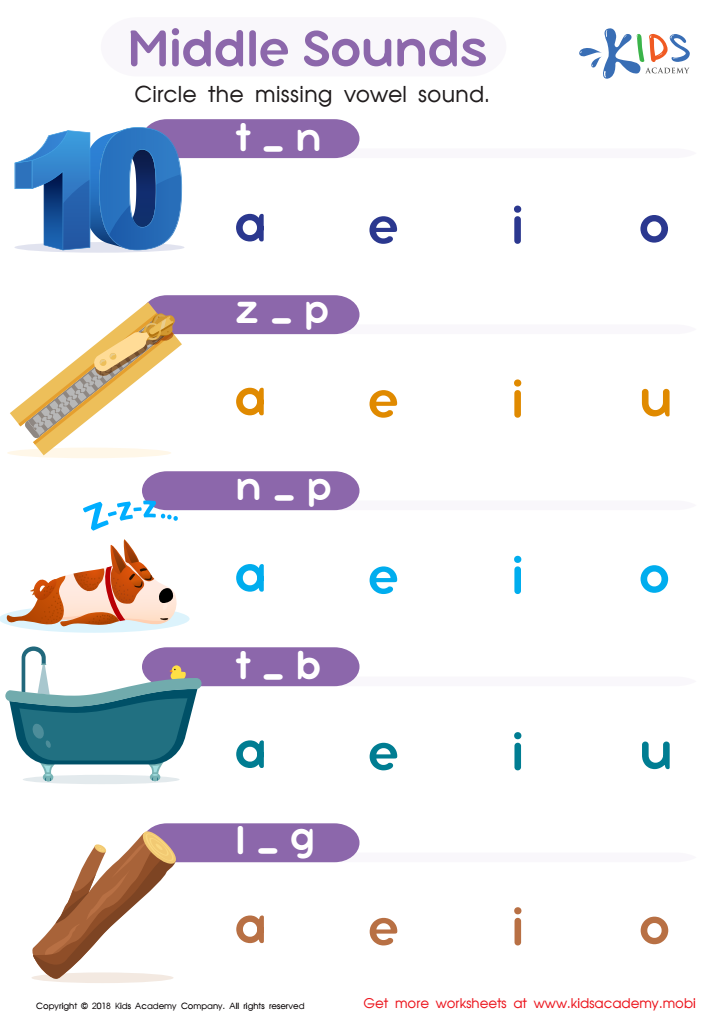

Middle Sounds Worksheet
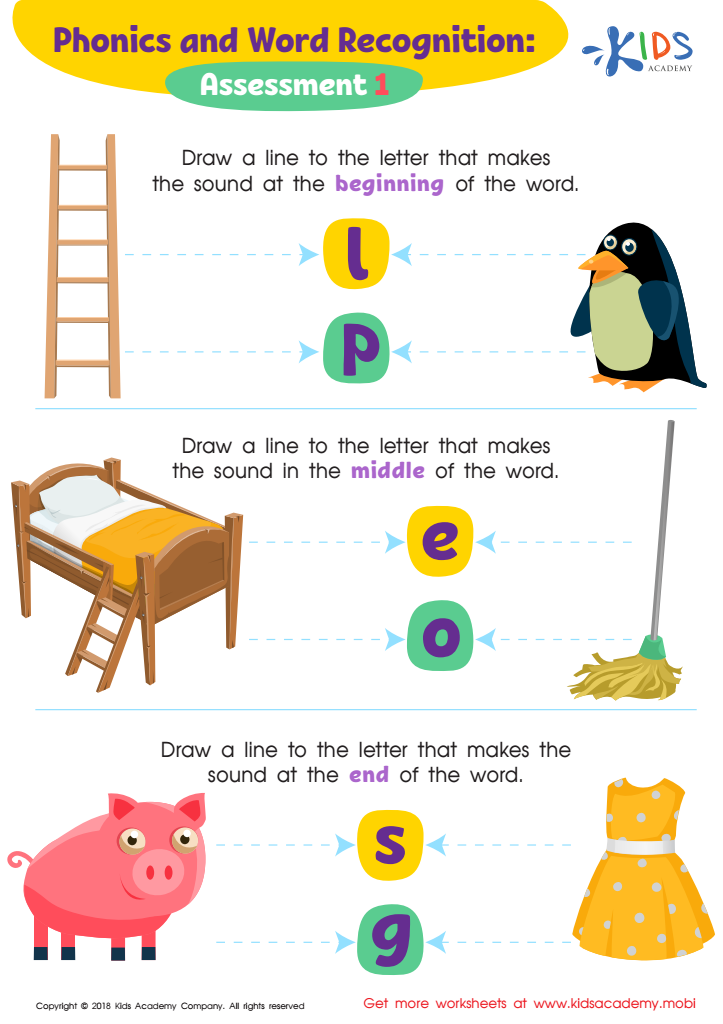

Phonics and Word Recognition: Assessment 1 ELA Worksheet
Parents and teachers should prioritize normal middle sounds in the development of children aged 3-8 because these sounds are pivotal in early literacy and language skills. During these formative years, children are learning to segment and blend sounds -- essential skills for reading and spelling. Normal middle sounds, or the sounds that occur in the middle of words, help in understanding syllable structure and phonemic patterns. If a child struggles with middle sounds, they may find it difficult to recognize and produce words accurately, potentially hindering their reading fluency and comprehension.
Focusing on these sounds aids in developing phonological awareness, which research has shown to be a crucial predictor of future reading success. By addressing middle sound identification early on, parents and teachers can intervene before small issues become significant challenges. Additionally, children’s overall communication skills—such as their ability to pronounce words correctly and their clarity in verbal interactions—benefit from robust middle sound mastery.
Practicing middle sounds can be engaging and fun, using games, songs, and interactive read-alouds, fostering a positive learning environment. Simplifying complex processes early establishes a strong foundation for children’s broader educational trajectories, setting the stage for their success in reading and beyond. Thus, parents and teachers supporting middle sound learning actively champion a critical component of early childhood development.

 Assign to the classroom
Assign to the classroom



